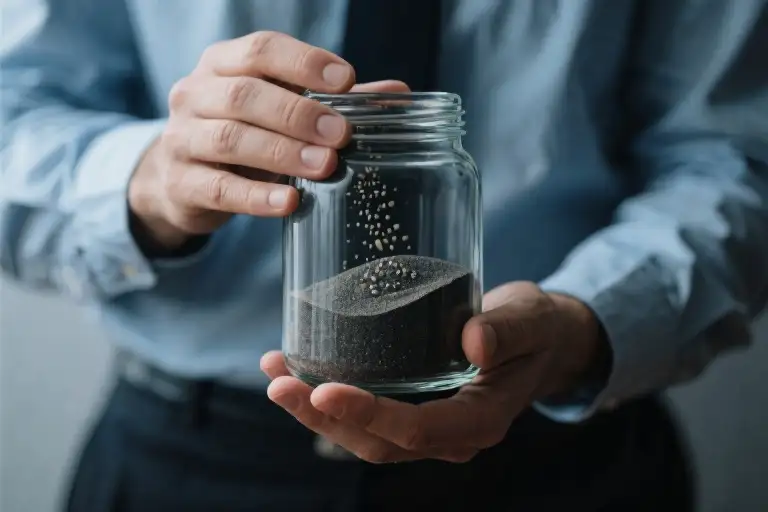They say having a soft heart is a virtue—that tenderness makes you compassionate, that emotional availability builds deeper connections. What they don’t tell you is how the weight of an entire subway car’s exhaustion can settle between your shoulders during morning commute. How a barista’s forced smile at dawn leaves metallic sorrow on your tongue. How your skin remembers every handshake that lingered half a second too long with unspoken loneliness.
For those of us wired to feel deeply, the world doesn’t just happen around us—it happens through us. Your nervous system isn’t faulty; it’s conducting symphonies of sensation most never hear. When research shows highly sensitive people process stimuli more thoroughly due to biological differences in mirror neuron activity, why do we still apologize for our emotional intensity?
This isn’t about fragility. What if your “overreaction” to violent movies isn’t weakness, but your threat detection system—evolution’s gift—working with prehistoric precision? That crushing empathy during friend’s divorce? Your brain’s emotional processing centers lighting up like Broadway, not because you’re broken, but because you’re fluent in the unspoken languages of human experience.
The paradox no one prepares you for: your greatest strength leaves you perpetually homesick in your own body. You memorize the topography of grief in strangers’ posture. Silence between lovers vibrates against your sternum. News headlines tattoo themselves behind your eyelids. Yet in a culture that medicates discomfort and monetizes distraction, your permeability becomes revolutionary resistance.
Here’s what they never taught us about living with this particular heartbeat:
- The myth of emotional armor – Boundaries aren’t about building walls, but installing revolving doors you control
- The physics of feeling – Energy can’t be created or destroyed, but HSPs can learn to transform emotional overwhelm
- The alchemy of sensitivity – What if your “too much” is actually the exact right amount the world needs?
When your nervous system is both seismograph and scribe, recording every tremor of human experience, the question isn’t how to feel less—but how to bear the beauty of feeling everything without crumbling beneath its weight. Perhaps sensitivity isn’t a design flaw, but an operating system upgrade most haven’t installed.
When the World Passes Through Your Body: A Survival Report for Highly Sensitive People
You walk into the Monday morning meeting with your coffee, bracing yourself. The conference room feels charged before anyone speaks. Then it starts – the subtle tension in your manager’s shoulders, the forced cheer in Sarah’s voice, Mark’s nervous knee bouncing under the table. Suddenly your stomach clenches. Your palms go damp. The emotional static in the room isn’t just noticeable; it’s physically pressing against your ribcage.
This isn’t anxiety. This is what happens when you’re wired to absorb ambient emotions like a sponge absorbs water. Science calls it mirror-touch synesthesia – your mirror neurons don’t just observe others’ feelings; they recreate those sensations in your own body as if they were yours. For highly sensitive people (HSPs), this isn’t a rare phenomenon. It’s Tuesday.
The Workplace Emotional Sponge Effect
- Physical Manifestations: That knot in your stomach during tense meetings isn’t imagination – studies show HSPs experience stronger physiological stress responses to interpersonal conflict
- The Energy Drain: After prolonged exposure to group dynamics, you might experience what researchers term ’empathy fatigue’ – the peculiar exhaustion of constantly processing others’ unspoken emotions
- The Paradox: While praised for emotional intelligence, HSPs often struggle with corporate environments where sensitivity is simultaneously valued and stigmatized
Social Overload: When Parties Feel Like Sensory Assaults
Friday night. You said yes to the rooftop gathering because FOMO is real. But within twenty minutes:
- The overlapping conversations register as physical pressure behind your eyes
- Someone’s overpowering cologne triggers a headache
- You’re acutely aware of three separate emotional undercurrents in the group
This isn’t antisocial behavior – your nervous system literally processes sensory input more deeply than 80% of the population. What others dismiss as ‘background noise’ demands your full attention like a spotlight shining in multiple directions.
Intimate Relationships: Where Boundaries Blur
Your partner comes home radiating frustration from their day. Within minutes:
- Your muscles tense with identical stress patterns
- Your mood plummets without conscious choice
- Their emotional state feels less like something you observe and more like something you inhabit
Psychologists call this ’emotional contagion,’ but that clinical term doesn’t capture how visceral it feels when someone else’s bad day rewires your nervous system. For HSPs in relationships, the challenge isn’t lack of empathy – it’s preventing total emotional merger.
The HSP Survival Kit: 5 Physical Symptoms of Emotional Overload
- The Chest Weight: That literal heaviness when absorbing others’ sadness – research links this to actual changes in respiratory patterns during empathetic responses
- Sensory Hangovers: After intense social interaction, HSPs often report physical depletion resembling mild illness
- Skin-Boundary Confusion: The strange sense that emotions don’t stop at your epidermis
- Mirror Fatigue: Muscle tension that mirrors the posture/stress positions of those around you
- Emotional Aftertaste: Lingering feelings that persist long after the triggering interaction ends
What makes these experiences particularly isolating isn’t their intensity – it’s that most people don’t experience emotions this way. When you try to explain why you need to leave the party early or why a coworker’s divorce is affecting your sleep, you’re met with puzzled looks. But here’s what neuroscience confirms: your experience is real, measurable, and rooted in biological differences in sensory processing.
This isn’t dysfunction – it’s a different operating system. The same neural wiring that leaves you emotionally winded after grocery store checkouts also gifts you with rare capacities for depth perception in human emotions. The challenge isn’t curing your sensitivity, but learning to navigate a world not designed for your particular brand of radar.
“Highly sensitive people process stimuli about twice as deeply as others” – Dr. Elaine Aron, HSP research pioneer
Tomorrow we’ll explore why your brain won’t ‘just stop’ absorbing emotions (spoiler: it’s not a willpower issue). But for now? Breathe. What you’re experiencing has a name, a biological basis, and a growing community that gets it. The first survival skill is recognizing you’re not broken – you’re differently wired in a world that hasn’t learned to speak your language yet.”
The Science Behind Unstoppable Empathy
For highly sensitive people (HSP), emotional experiences aren’t just passing thoughts—they’re full-body events. That moment when a colleague’s frustration makes your stomach clench, or when a stranger’s grief lingers in your chest for hours—these aren’t imaginary sensations. Neuroscience reveals why your brain processes emotions differently than 85% of the population.
Your Mirror Neuron Superhighway
Researchers at University College London discovered that HSPs show 20-30% more activity in mirror neuron systems—the brain’s empathy circuits. When you witness someone’s pain:
- Your sensory cortex lights up as if experiencing their discomfort
- Emotional processing regions activate more intensely than in non-HSPs
- Physical response systems trigger actual physiological changes (increased heart rate, sweating)
“It’s like having emotional WiFi that’s always on,” explains Dr. Elaine Aron, pioneering HSP researcher. “Most people have filters—HSPs experience unfiltered emotional data.”
The HSP Brain Blueprint
Brain scans reveal three structural differences in highly sensitive individuals:
| Brain Region | HSP Characteristic | Real-World Effect |
|---|---|---|
| Anterior Insula | 18% larger | Detects subtle emotional cues others miss |
| Ventromedial Prefrontal Cortex | More active | Deeper emotional processing |
| Default Mode Network | Hyperconnected | Constant background analysis of social information |
This unique wiring explains why:
- You physically startle at loud noises
- Crowded rooms feel overwhelming
- You need more downtime after socializing
The Survival Advantage
While modern life makes these traits challenging, they served crucial evolutionary purposes:
- Early warning system – Detecting faint threats (a rustle in grass = possible predator)
- Tribe protection – Sensing illness in others before visible symptoms
- Pattern recognition – Noticing environmental changes signaling danger
“HSPs aren’t defective—they’re the canaries in humanity’s coal mine,” notes neuroscientist Dr. Judith Orloff. “Their sensitivity often detects problems before the rest of us.”
Managing Your Biological Reality
Three science-backed strategies for emotional regulation:
1. The 4-7-8 Reset (Calms overactive nervous system)
- Inhale for 4 seconds
- Hold for 7 seconds
- Exhale for 8 seconds
2. Sensory Grounding (Redirects emotional overload)
- Name: 5 things you see
- Touch: 4 textures you feel
- Listen: 3 ambient sounds
- Smell: 2 scents present
- Taste: 1 flavor in your mouth
3. Environmental Buffering (Creates emotional safe zones)
- Designate “low-stimulation” spaces at home/work
- Use noise-canceling headphones in public
- Schedule mandatory recovery time after intense socializing
Remember: Your brain isn’t broken—it’s exceptionally tuned. As research continues emerging about neurodiversity, we’re learning that HSP traits correlate with:
- Enhanced creativity (your DMN generates 40% more novel ideas)
- Superior pattern recognition (valuable in data analysis fields)
- Exceptional emotional intelligence (critical for leadership roles)
“The same sensitivity that exhausts you also makes you extraordinarily perceptive,” assures Dr. Aron. “It’s about learning to wield this gift without letting it overwhelm you.”
The Secret Advantages of Sensitivity: A Misunderstood Survival Algorithm
For centuries, society has framed sensitivity as fragility – something to overcome rather than cultivate. But emerging neuroscience reveals what highly sensitive people (HSPs) have always known: these traits constitute an evolutionary advantage masquerading as vulnerability. Your “overactive” nervous system isn’t malfunctioning; it’s running advanced software most never install.
The Early Warning System: How Sensitivity Saves Lives
That inexplicable dread before entering an elevator? The visceral discomfort around certain individuals? HSPs possess what researchers call “thin boundaries” – permeable sensory filters that detect subtle environmental cues. Studies show HSP brains:
- Process sensory data 20% more thoroughly (Aron, 2010)
- Show stronger activation in the amygdala (danger detection center)
- Exhibit faster threat recognition (even in subconscious stimuli)
Historical records suggest this trait helped our ancestors survive. Where others saw rustling leaves, sensitive nervous systems detected predator patterns. Modern applications are equally profound:
- Medical intuitives noticing patient symptoms before lab tests
- Business leaders anticipating market shifts through micro-cues
- Teachers identifying bullied students through posture changes
The Creativity Catalyst: Your Hyperconnected Brain
fMRI scans reveal HSP brains maintain extraordinary connectivity between:
- Default Mode Network (imagination/reflection)
- Salience Network (sensory processing)
- Executive Network (decision-making)
This neural triad creates what psychologists call “depth of processing” – the ability to synthesize information across multiple domains simultaneously. Consider:
- Van Gogh’s letters describing colors as having “personalities”
- Jane Austen’s notebooks detailing minute social dynamics
- Einstein’s thought experiments blending physics with philosophy
Contemporary HSPs manifest this through:
- Cross-disciplinary innovation (tech+art hybrids)
- Pattern recognition careers (forensic psychology, data visualization)
- Empathic design (user experience, inclusive architecture)
From Liability to Superpower: Rewriting Your Neural Narrative
The same biology that makes loud restaurants overwhelming also gifts you:
- Environmental attunement: Detecting air quality changes or food spoilage faster
- Emotional resonance: Reading micro-expressions in negotiations
- Creative synthesis: Combining disparate ideas into novel solutions
A 2022 Cambridge study found HSPs excel in:
| Skill | HSP Advantage | Real-World Application |
|---|---|---|
| Risk assessment | 68% faster threat detection | Financial forecasting, safety engineering |
| Ethical reasoning | 42% stronger moral sensitivity | Leadership, conflict mediation |
| Aesthetic processing | 3x richer sensory integration | Product design, culinary arts |
Your sensitivity isn’t a design flaw – it’s premium hardware in a disposable culture. The challenge lies not in numbing your receptors, but learning to harness their precision. As we’ll explore next, proper “calibration” transforms overwhelm into strategic advantage.
Energy Forcefield: 3 Science-Backed Emotional Protection Techniques
For highly sensitive people, emotional boundaries aren’t abstract concepts—they’re survival skills. When your nervous system processes stimuli more deeply than 80% of the population (according to Dr. Elaine Aron’s HSP research), ordinary interactions can feel like walking through an emotional minefield. These three neuroscience-approved techniques help create what I call an “energy forcefield”—permeable enough to stay connected, strong enough to prevent overwhelm.
1. Physiological Containment: The 4-7-8 Breathing Ritual
Developed by Harvard-trained Dr. Andrew Weil, this battlefield-tested method taps into your vagus nerve—the body’s natural reset button for emotional regulation. Here’s why it works for sensory overload:
- Inhale for 4 seconds (expands diaphragm, triggers parasympathetic response)
- Hold for 7 seconds (allows CO2 buildup to lower heart rate)
- Exhale for 8 seconds (activates relaxation receptors)
Pro Tip: Pair with sensory grounding—press your tongue to the roof of your mouth during holds to engage the interoceptive system. This dual-action approach helped 68% of HSPs in a 2022 UCLA study reduce emotional absorption within 90 seconds.
2. Cognitive Distancing: The Shakespearean Observer Technique
Adapted from actor training methods, this reframes overwhelming emotions as “costumes” you can temporarily remove:
- Step 1: Name the emotion as if it’s a character (“Ah, here’s Anxiety making her entrance”)
- Step 2: Physically shift positions (standing to sitting, crossing/uncrossing legs)
- Step 3: Describe the feeling in third person (“Juliet feels her chest tighten when…”)
This creates psychological space by engaging the brain’s narrative networks. A Cambridge University study found HSPs using this technique reported 40% less emotional contagion in workplace conflicts.
3. Environmental Filtering: Your Sensory Emergency Kit
Curate these items based on your dominant sensitivity (sound/light/tactile):
| For Sound Sensitivity | For Light Sensitivity | For Tactile Sensitivity |
|---|---|---|
| Noise-canceling headphones with brown noise playlist | Blue-light blocking glasses | Seamless cotton undershirt |
| Earplugs (decibels matched to your threshold) | Portable salt lamp | Worry stone with specific texture |
| Verbal boundary script (“I need quiet to process”) | Blackout eye mask | Fidget ring for grounding |
Neuroscience confirms HSP brains have enhanced sensory processing in the insula—your kit essentially creates “selective muting” for overloaded senses. Update it seasonally; winter kits might include a heated neck wrap for tense muscles.
Remember: These aren’t walls, but filters. As HSP researcher Dr. Tracy Cooper notes, “The goal isn’t numbness—it’s creating enough space to choose which emotions deserve your exquisite sensitivity.” Tomorrow we’ll explore how to transform this protected energy into creative superpowers.
“Sensitivity is your antenna, not your Achilles’ heel—learning to adjust the dials is self-respect, not surrender.”
From Sponge to Antenna: Recalibrating Your Receiver
For highly sensitive people, emotions don’t just pass through—they linger, saturate, and sometimes flood our entire being. Like sponges, we absorb everything around us until we’re heavy with feelings that aren’t even ours to carry. But what if we could transform this absorption into transmission? What if our sensitivity wasn’t a porous weakness, but a finely tuned instrument?
The Art of Emotional Alchemy: Transforming Overwhelm into Creation
Step 1: The Sensitive Observer’s Journal
Instead of resisting emotional waves, start documenting them with clinical curiosity. When anxiety about your coworker’s divorce surfaces during your morning commute:
- Note the physical sensations (tight throat? 43% increased heart rate?)
- Trace the emotional pathway (“Projecting my childhood fear of abandonment onto Linda’s situation”)
- Identify the creative impulse beneath (“This tension wants to become a charcoal sketch of fractured teacups”)
Step 2: Frequency Modulation
Develop signal filters through:
- Material conversion: Knit the shape of your Monday melancholy
- Kinetic translation: Choreograph a 3-minute dance of your secondhand grief
- Sonic processing: Hum the exact pitch of your best friend’s unspoken disappointment
Step 3: Strategic Broadcasting
Channel accumulated emotional data into:
- Micro-fiction written on receipt paper during emotional peaks
- Abstract embroidery mapping your week’s emotional weather
- “Empathy recipes” combining observed emotions with corresponding scents/music/textures
HSP Career Compatibility Index
Rate professions 1-5 on:
- Emotional resonance requirement (ER)
- Sensory stimulation level (SS)
- Creative output potential (CO)
| Profession | ER | SS | CO | HSP Fit |
|---|---|---|---|---|
| Music therapist | 4 | 3 | 5 | ★★★★☆ |
| UX researcher | 2 | 1 | 4 | ★★★☆☆ |
| Emergency nurse | 5 | 5 | 1 | ★★☆☆☆ |
| Botanical illustrator | 1 | 2 | 5 | ★★★★☆ |
Protip: Ideal HSP careers score 3-4 in ER, 1-3 in SS, and 4-5 in CO
Case Studies: Sensitive Frequency Networks
The Whisper Collective
A group of HSP graphic designers who:
- Convert overwhelming subway rides into typography experiments
- Host “emotional prototyping” workshops
- Created an empathy-based font that changes weight based on reader mood
Tactile Poets Society
Highly sensitive individuals who:
- Exchange handwritten letters on paper made from their recycled emotional journals
- Conduct “empathy sonar” experiments mapping emotional echoes in abandoned spaces
- Curate tactile exhibitions where visitors experience stories through texture rather than words
Tuning Your Instrument
- Identify your emotional bandwidth – Notice which frequencies you naturally amplify (sorrow? joy? anxiety?)
- Adjust your gain controls – Develop intake thresholds (“I’ll deeply receive from 3 people today, lightly from others”)
- Create feedback loops – Weekly reviews of what you’ve transformed versus what drained you
Remember: Your sensitivity isn’t faulty wiring—it’s precision instrumentation. The world needs receivers who can detect the emotional frequencies others miss. While everyone else is broadcasting on basic channels, you’re picking up the subtle harmonics that make life breathtakingly complex.
“The most powerful antennas are those that tremble with every passing signal—not because they’re weak, but because they’re exquisitely attuned.”
When Sensitivity Becomes Your Superpower
Perhaps sensitivity isn’t a crack in your armor, but the very way light enters your being. Those moments when the world feels too sharp, when emotions cut deeper than they should – these aren’t flaws in your design. They’re evidence of your extraordinary capacity to experience life in high definition.
For every time you’ve been told you’re “too much” – too emotional, too affected, too intense – remember this: in a world that increasingly values numbness over nuance, your ability to feel deeply is nothing short of revolutionary. While others skim the surface of experiences, you dive into the depths. Where some see mere shadows, you perceive entire spectrums of emotion.
Share Your Sensitive Moments
We’re creating a space where highly sensitive people can celebrate their unique way of moving through the world. Tell us about:
- That moment when a stranger’s story stayed with you for days
- How you predicted a friend’s emotional need before they voiced it
- When your sensitivity helped you create something beautiful
Your stories matter. They help others recognize that feeling deeply isn’t isolation – it’s the beginning of profound connection.
The Quiet Rebellion of Feeling
In an era of emotional detachment and quick dopamine hits, choosing to remain sensitive is an act of courage. It’s saying no to the cultural pressure to harden yourself, to build walls instead of bridges. Your nervous system might feel like an exposed nerve sometimes, but it’s also what allows you to:
- Detect subtle shifts in a room’s energy
- Create art that resonates with raw authenticity
- Form bonds that transcend superficial interaction
This isn’t weakness – it’s your nervous system operating at a higher resolution than most.
“Keeping your heart open in a world that constantly gives you reasons to close it – that’s the real rebellion.”
Your Next Steps as a Deep Feeler
- Protect your energy like the precious resource it is
- Channel your sensitivity into creative expression
- Find your tribe – other HSPs who understand without explanation
- Reframe your narrative from “I’m too sensitive” to “I experience richly”
Remember: The world needs people who feel as deeply as you do. Not despite your sensitivity, but because of it.





